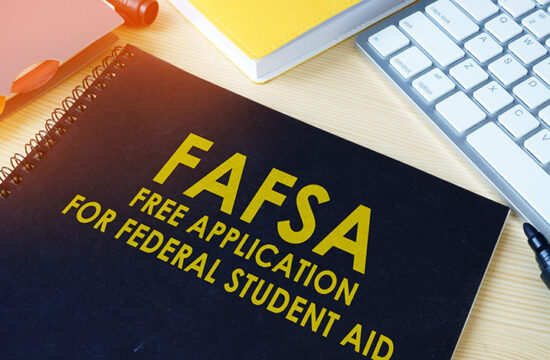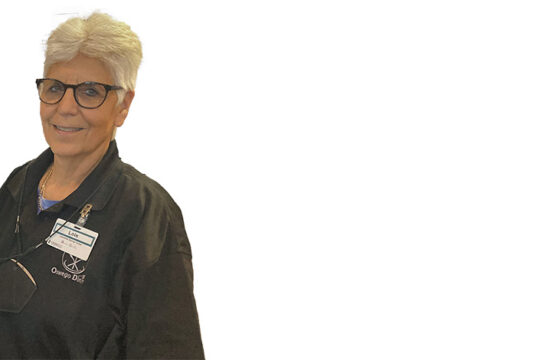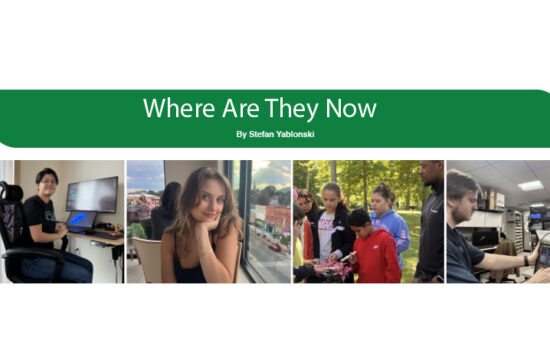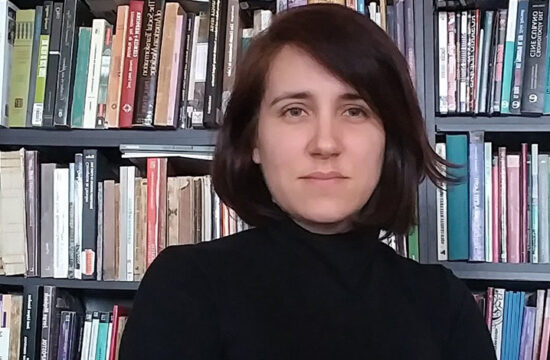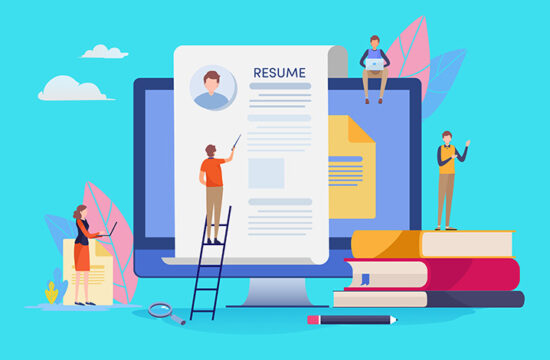Now as a professor at the college, Karin Dykeman hopes to inspire the next generation of educators
By Steve Yablonski
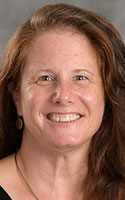
SUNY Oswego technology education students and schoolchildren had the opportunity recently to connect for hands-on lessons via the first-ever virtual STEM 4 Kids and Young Inventors programs.
The Oswego Technology Student Association and the department of technology launched STEM 4 Kids — for kindergarten through third grade in 2012. When participants and parents asked for more opportunities for older children, the team added Young Inventors for fourth through sixth graders, all of which provides experience to future teachers in the technology curriculum’s “Teaching Methods” course.
Karin Dykeman is one of the Kids Tech program coordinators from the technology education faculty. The programs are a beneficial teaching and learning experience that provides rich “hand-on, minds-on” STEM lessons and activities for elementary schoolchildren and their families from Oswego County.
She teaches education sequence courses as well as technical writing and literacy. Her first year in higher education has been an active one earning a $7,000 grant, getting accepted into a higher education leadership program, serving on school and college level committees, teaching six courses, and co-facilitating Oswego KidsTech.
She resides in Tully, south of Syracuse, with her family, including a very spoiled cat and miniature schnauzer.
A college-bound girl
“I grew up in the rural upper Hudson Valley with a large, close-knit, self-reliant extended family. If something broke, we couldn’t afford to buy a new one, so we fixed things ourselves; no outside plumbers, carpenters or mechanics were hired.
In high school, I was counseled out of taking what were then ‘shop’ classes or attending BOCES programs. I was a college-bound girl; I didn’t need that stuff,” she said.
Not many people she knew had gone to college; even fewer had finished a four-year degree.
“I had dreams, but little direction,” she said.
She ended up at SUNY Oswego for the first time in 1987 as an undergraduate enrolled in the Honors College. She chose Oswego because it had 12 of the 15 things she thought she might major in, “and I liked the campus and lake,” she said.
After spending her first semester doing little other than writing papers, she decided she needed to take a class that would let her use her hands to do something other than type.
None of the art classes fit her schedule. In browsing the other offerings, she came across the listings for the technology department.
“The only course that fit my schedule was metals production and processing. I hadn’t done much work with metal in the past, but it sounded more interesting than writing papers. So, I signed up,” she said, adding, “That course changed the direction of my life. The work was fun and challenging and led directly to a job which involved teaching this fun and challenging stuff to others. I was hooked and changed my major.”
After graduating, she went right to work both teaching and continuing to learn from mentor teachers.
“That first year I became involved in the New York State Technology Education Association, NYSTEA, (now known as the New York State Technology and Engineering Educators Association) joining the executive board shortly after. My work with NYSTEA led to opportunities to work with the New York State Education Department to advance instruction and assessment in technology education as well as the MST (math, science, technology) movement,” she said.
Continuing education
In those first several years, she also earned her master’s degree in elementary curriculum and instruction, which was “an unusual direction for a technology education teacher.”
“However, I realized how important it is to nurture and build on the innate curiosity, creativity and fearlessness children come to school with, and wanted to learn more about how to do that,” she said. “Technology education is the perfect vehicle, delivering integrated, transdisciplinary projects which engage children and take advantage of all those qualities.”
After a few moves early on, she ended up teaching in the Liverpool school district.
She spent 24 years there, teaching a variety of courses from digital photography to material processing, but mostly introductory design and college-level engineering courses.
“In addition to my work in the classroom, I have been involved with high school students in extracurricular robotics programs for about 15 years, implemented a K-12 extracurricular robotics program in my home school district, provided numerous STEM activities through community organizations and worked on numerous districts, state and national level curriculum and assessment projects,” she said.
Toward the end of her career there, she was selected as a New York state master teacher and earned a post-master’s degree certificate of advanced study in educational leadership.
Back to Oswego
“When the chance came to teach at SUNY Oswego in the program that gave me my start, I was intrigued but hesitant,” she admitted. “Did I really want to make a change at this point in my career? Was I willing to start over? The challenge and allure of helping future teachers get off to a good start and sharing what I’ve learned about teaching and learning won out and I was fortunate to be selected to become a part of the technology department once again.”
In the last 13 months, she has taught six different courses focused in the department’s education sequence. Two graduate courses (history and philosophy of technology education, and assessment in technology education) and four undergraduate courses (technical writing and literacy, introduction to teaching technology education, introduction to technology education curriculum, and teaching methods for technology education).
“Our goal is to deliver the STEM 4 Kids program in-person in the fall. However, we will do whatever it takes and return to remote if necessary,” she said.
A recent gift from National Grid will enable them to expand the program to offer both in-person and remote sessions each semester.
“The move to remote instruction last year was challenging, but allowed us to reach an audience broader than ever before,” she said.
Prior to 2020, STEM 4 Kids has engaged hundreds of elementary students from across the greater Oswego County area in STEM enrichment programs each semester. The shift to remote instruction allowed them to reach beyond the local area, including students from the North Country, Hudson Valley and Western New York.
“The program expansion, due to National Grid’s gift, will allow us to maintain both the remote and in-person programs, involve college students in all our education sequence courses, continue to reach local Oswego area students and expand the number of remote learners across the state and beyond,” she said.






